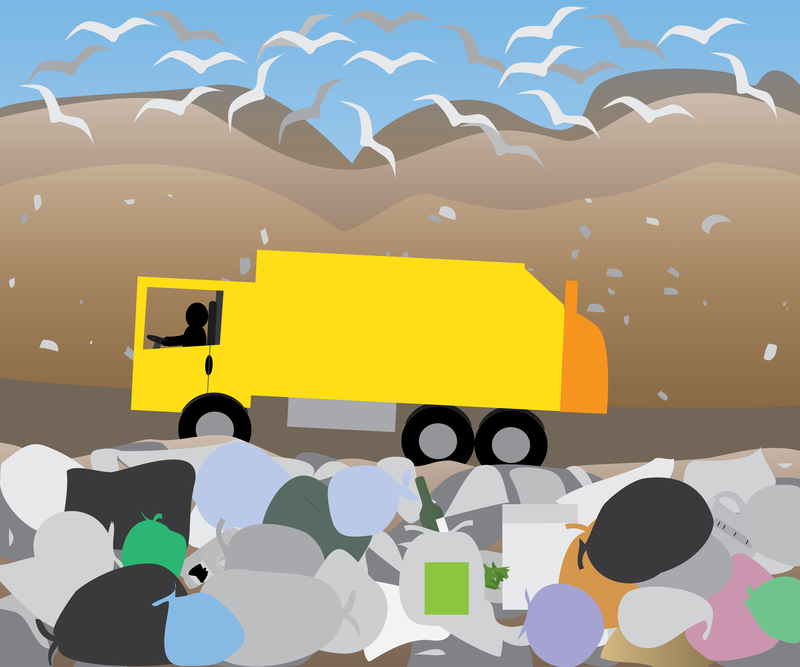Evaluating Waste for Hazardous Properties: A Comprehensive Guide
Waste management is a critical component of environmental safety, industrial compliance, and public health protection. Properly evaluating waste for hazardous properties ensures risks are minimized while meeting local, national, and international regulations. This article offers a thorough, SEO-optimized exploration of how to identify, test, and manage waste with potential hazardous characteristics.
Understanding Hazardous Properties in Waste
Before disposal or treatment, it's essential to determine if a material possesses hazardous traits. Hazardous waste typically contains substances or qualities that can harm humans, wildlife, or the environment. Common hazardous waste properties include:
- Toxicity - Can cause long-term health effects or environmental damage.
- Corrosivity - Destroys or irreversibly alters living tissue or materials.
- Ignitability - Can catch fire under certain conditions.
- Reactivity - May explode or react violently under normal conditions.
- Ecotoxicity - Harmful to aquatic or terrestrial organisms.
Each hazardous property requires specialized handling and analytical methods for comprehensive waste evaluation. Accurate identification is not only a legal duty but also critical for environmental stewardship.

Why Is Evaluating Waste for Hazardous Properties Important?
An in-depth evaluation of waste hazards brings numerous benefits and fulfills several key objectives:
- Legal Compliance - National and international regulations, such as the Resource Conservation and Recovery Act (RCRA) in the US or the European Waste Framework Directive, require strict classification.
- Environmental Protection - Prevents contamination of land, air, and water.
- Human Health and Safety - Minimizes risk in workplaces, communities, and for waste handlers.
- Cost-Effective Management - Reduces liability and optimizes treatment/disposal costs.
Many industries, from manufacturing to healthcare, generate potentially hazardous waste. If these materials are incorrectly classified or managed, the results can be disastrous--ranging from regulatory fines to environmental disasters.
Legal Frameworks Governing Hazardous Waste Evaluation
The assessment of waste hazards is deeply rooted in legally binding standards. Regulations dictate both the criteria for hazardous properties and the appropriate testing protocols.
Key International Regulations
- Basel Convention - Sets guidelines for transboundary movement and disposal of hazardous wastes.
- European Waste Framework Directive - Provides a framework for managing waste within the European Union, including hazardous properties (HP1 to HP15).
- Resource Conservation and Recovery Act (RCRA) - US-based regulation governing identification and management of hazardous waste streams.
*Failure to adhere to these frameworks can result in significant legal and financial consequences.*
National Regulations
Countries may have unique hazardous waste lists and assessment techniques. It is imperative to consult your jurisdiction's official procedures when assessing the hazardous classification of waste.
Key Steps in Evaluating Waste for Hazardous Properties
Systematically evaluating waste for hazardous properties involves several stages, from documentation review to laboratory analysis. Here's a comprehensive breakdown:
1. Waste Characterization
- Physical Inspection - Observing color, consistency, and odor.
- Origin Documentation - Reviewing production logs and safety data sheets (SDSs).
- Initial Risk Assessment - Identifying potential hazards based on known ingredients or sources.
Thorough documentation supports accurate hazard identification and streamlines further analysis.
2. Sampling and Sample Preparation
- Representative Sampling - Ensuring that samples reflect the waste as a whole.
- Correct Preservation - Preventing degradation or contamination prior to testing.
- Chain of Custody - Maintaining clear records from sample collection to laboratory delivery.
Quality sampling is the backbone of trustworthy hazardous waste analysis.
3. Laboratory Analysis and Testing Methods
Laboratories employ standardized procedures to ascertain hazardous properties. The selection of tests depends on regulatory requirements and the expected nature of the waste.
- Toxicity Characteristic Leaching Procedure (TCLP) - Assesses if harmful elements like lead, mercury, or arsenic can leach out under landfill conditions.
- Flash Point Testing - Determines ignitability (flammability risks).
- pH and Corrosivity Tests - Identifies highly acidic or basic waste.
- Reactivity Tests - Checks for violent reactions with water, air, or other substances.
- Ecotoxicity Testing - Assesses impact on living organisms, often using aquatic species.
Test results must be compared against legal thresholds to determine hazardous status.
4. Comparison with Regulatory Lists
- Listed Waste - Some materials are automatically classified as hazardous (e.g., F-list, K-list in the US).
- Characteristic Waste - Materials not on lists but exhibiting regulated hazardous traits.
- Mixture and Derived-From Rules - Address how combined or processed wastes are classified.
If a waste matches a listed hazardous type or fails characteristic tests, it should be managed as hazardous.
5. Documentation and Reporting
- Waste Analysis Reports - Detailed test results and classifications.
- Manifest Documentation - For tracking hazardous waste shipment and disposal.
- Retention of Records - Essential for regulatory review and audits.
Common Testing Methods for Hazardous Waste Properties
Let's delve deeper into the most recognized testing protocols for identifying hazardous characteristics in waste:
- Toxicity Testing: The TCLP is widely used to simulate leaching conditions in landfills. If the leachate contains contaminants above regulatory levels, the waste is classified as hazardous.
- Corrosivity: Testing waste with pH meters and corrosion-rate analysis determines if it is dangerously acidic (pH <= 2) or basic (pH >= 12.5).
- Ignitability: Waste with a flash point below 60?C (140?F) is considered flammable and hazardous. Specialized equipment safely measures this threshold.
- Reactivity: Laboratories test for the generation of toxic gases, potential for explosion, and violent chemical reactions.
- Ecotoxicity: Both acute and chronic toxicity are tested, often involving bioassays with indicator species.
Challenges and Best Practices in Hazardous Waste Evaluation
Common Challenges
- Complex Waste Streams - Industrial blends can contain a mix of hazardous and non-hazardous substances.
- Changing Regulations - Standards may evolve, affecting waste status.
- Sample Variability - Non-uniformity in waste complicates representative sampling.
- Insufficient Documentation - Gaps in waste generation records create uncertainty in classification.
Best Practices
- Regular Training: Keep staff current with regulatory requirements and sampling protocols.
- Third-Party Audits: External experts can validate classification and management processes.
- Integrated Waste Tracking: Use digital tools for documentation and manifesting.
- Consult Legal Counsel: Especially for ambiguous waste streams or cross-border shipment.
Implementing these strategies helps organizations avoid errors in hazardous property evaluation and ensures safety and compliance.
Disposal and Treatment Decisions Following Evaluation
Once waste is evaluated for hazardous properties, correct disposal or treatment methods must be chosen:
- Incineration: Suitable for organic hazardous waste or materials with high calorific value.
- Landfilling: Permitted only in licensed hazardous waste landfills with leachate containment systems.
- Chemical Treatment: Neutralization or precipitation to mitigate hazardous traits.
- Resource Recovery: Recycling or reclaiming valuable components (metals, solvents, etc.).
- Export/Import: Additional compliance with Basel Convention and national regulations for cross-border transfer.
Failure to use appropriate disposal methods can cause environmental disasters and significant legal repercussions.

Recent Trends and Innovations in Hazardous Waste Evaluation
Waste evaluation is evolving thanks to advances in analytical chemistry, digital logging, and sustainability practices:
- Real-Time Risk Assessment: Portable instruments and rapid tests enable on-site hazard screening.
- Automation & Data Management: AI-powered platforms facilitate faster, error-free waste classification.
- Green Chemistry Approaches: New treatment processes reduce the formation of hazardous by-products.
- Circular Economy: Emphasis on recycling and resource recovery is reducing hazardous waste generation.
Companies that invest in state-of-the-art technology not only ensure compliance but also demonstrate leadership in environmental responsibility.
Conclusion: The Importance of Diligence in Evaluating Waste for Hazardous Properties
In today's world, evaluating waste for hazardous properties is more than a regulatory checkbox--it's a responsibility with far-reaching implications. By implementing best practices for hazard identification, compliance documentation, and innovative treatment, organizations protect the environment and public health.
Remember: Effective hazardous waste evaluation requires a multidisciplinary approach--combining legal knowledge, analytical expertise, and an unwavering commitment to safety.
Continually review and update your waste assessment protocols to adapt to changing regulations and scientific advances, ensuring your organization's sustainable future.
Further Reading and Resources
For expert support, consult accredited environmental laboratories and regulatory agencies familiar with the hazardous properties evaluation process.